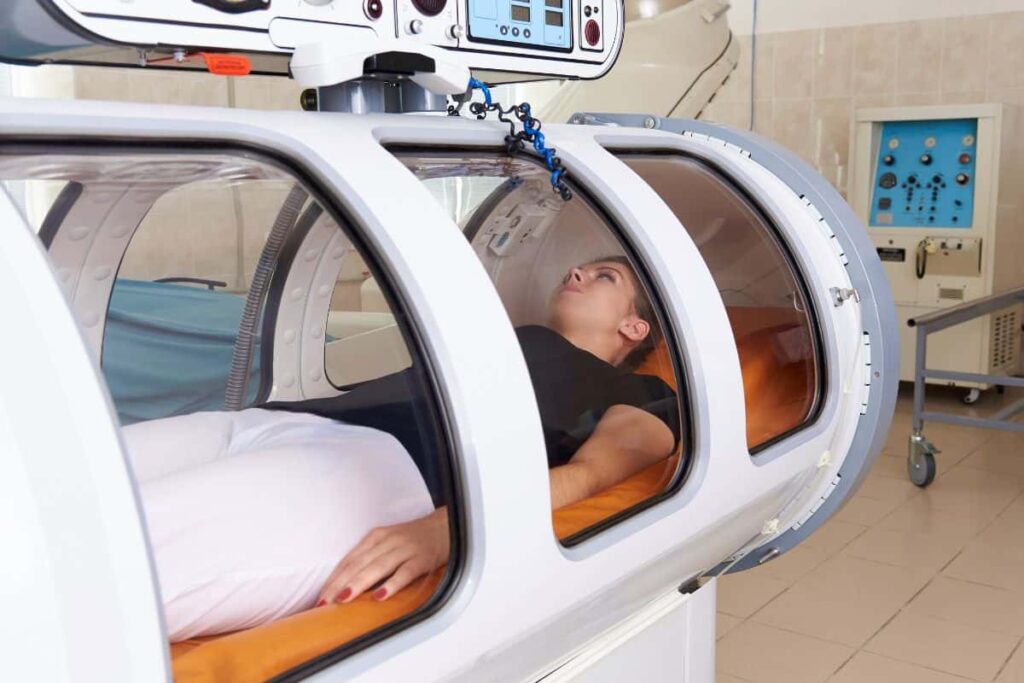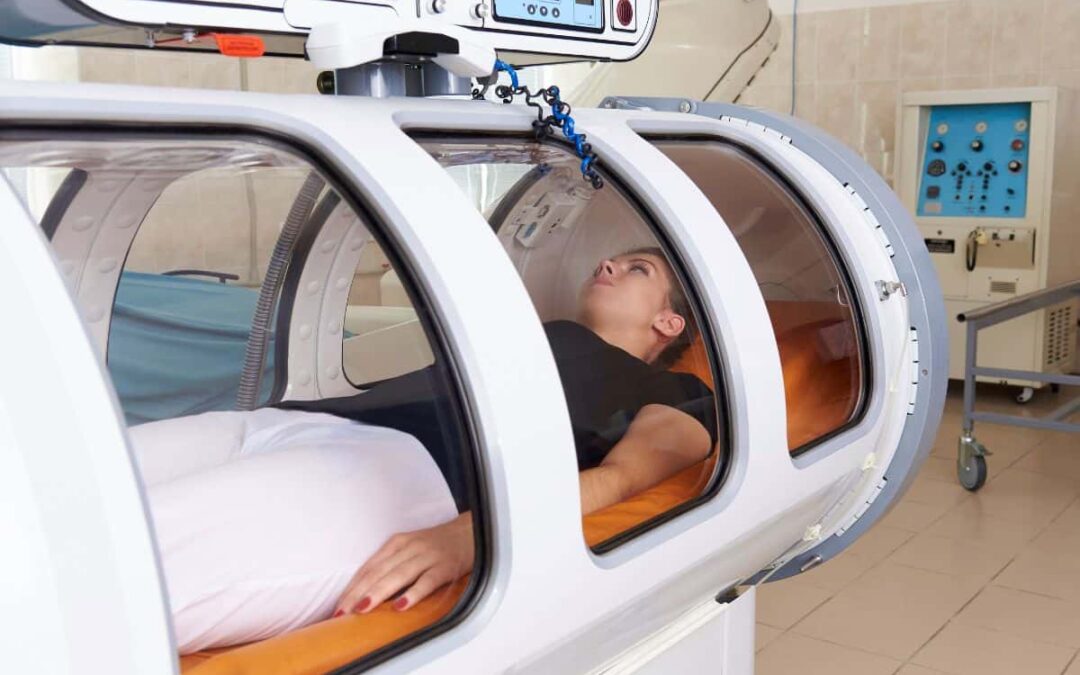If you have had to undergo surgery, you know that the recovery process can be long and painful. Sometimes, wounds take time to heal, get infected or cause complications. What if I told you that there is a way to speed up healing and reduce the risk of infections and other problems?
Hyperbaric chamber, a treatment that consists of breathing pure oxygen at a pressure higher than atmospheric. In this article, I will explain what a hyperbaric chamber is, how it works, what benefits it has before and after surgery and what possible advantages and disadvantages its use has. In addition, I will give you some examples of real cases in which the hyperbaric chamber has been very helpful. If you want to know more about this topic, keep reading.
Table of Contents
What is a Hyperbaric Chamber and How Can it Help You Recover from Surgery?
If you have had to undergo surgery in Santo Domingo, you will know that the recovery process can be long and painful. Sometimes, the wounds take a long time to heal, become infected or cause complications. What if I told you that there is a way to speed up healing and reduce the risk of infections and other problems?
What is a hyperbaric chamber?
A hyperbaric chamber is a medical device that is used to administer hyperbaric oxygen therapy (HBOT). HBOT consists of breathing 100% oxygen at a pressure higher than normal. Normally, the air we breathe contains 21% oxygen and the rest are other gases such as nitrogen and carbon dioxide. By breathing pure oxygen at high pressure, it is possible to increase the amount of oxygen that reaches the body’s tissues, which promotes cellular regeneration, wound healing, elimination of bacteria and reduction of inflammation.
The hyperbaric chamber is cylindrical or spherical in shape and is made of metal or plastic. Inside, there is one or more stretchers where patients receiving treatment lie down. The chamber is sealed and connected to a system that regulates pressure and oxygen flow. Treatment lasts between 60 and 120 minutes and can be repeated several times a day or week, according to medical indications.
How does a hyperbaric chamber work?
The operation is based on two physical principles: Boyle’s law and Henry’s law. Boyle’s law states that, at constant temperature, the volume of a gas is inversely proportional to the pressure it is under. That is, if we increase the pressure on a gas, its volume decreases and vice versa. Henry’s law states that, at constant temperature, the amount of gas dissolved in a liquid is directly proportional to the partial pressure of the gas above the liquid. That is, if we increase the pressure of the gas above the liquid, more gas dissolves in it and vice versa.
By applying these laws to the hyperbaric chamber, we can understand how it works. By increasing the pressure inside the chamber, the volume of air is reduced and more pure oxygen can be introduced. When breathing this high-pressure oxygen, more oxygen dissolves in the blood and body fluids. In this way, oxygen reaches all the cells of the organism, even areas with poor blood circulation or damaged by an injury or infection.
What benefits does a hyperbaric chamber have before and after surgery?
The hyperbaric chamber has multiple benefits for patients undergoing surgery or recovering from it. Here are some of them:
Before surgery: The hyperbaric chamber can prepare the body for surgical stress by enhancing the immune defenses, improving tissue oxygenation and reducing the risk of bleeding and infection. It can also help prevent or treat complications from anesthesia such as hypoxia (lack of oxygen), hypotension (low blood pressure), or acidosis (buildup of acid in the blood).
After surgery:
- Speed up wound and incision healing by increasing blood circulation and oxygen delivery to injured tissues. This reduces recovery time.
- Prevent or treat post-surgical infections by enhancing the body’s natural infection-fighting capabilities. The increased oxygen acts as a bactericide.
- Improve graft and implant healing by promoting angiogenesis (new blood vessel formation) which improves blood supply. This helps transplanted tissues survive.
- Reduce swelling (edema) and inflammation that typically accompany surgery and cause pain. The hyperbaric oxygen has anti-inflammatory effects.
- Alleviate pain by reducing nerve sensitivity and pain signaling. The increased oxygen reduces swelling against nerves.
- Dissolve gas bubbles that can form after surgery and cause dangerous embolisms if they enter the bloodstream. The high pressure crushes the bubbles.
- Minimize blood loss by constricting blood vessels and promoting clotting. This prevents complications from excessive bleeding.
- Improve heart, lung and brain function after anesthesia or surgical trauma by increasing oxygen transport to vital organs.
- Enhance the immune system by stimulating white blood cell activity and new tissue growth factors.
Duration of the Effect of the Hyperbaric Chamber.
The duration of the effect of hyperbaric chamber therapy varies according to the medical condition treated and the individual patient’s response. In some cases, the benefits of one session can be immediate, as in improved tissue oxygenation. However, for chronic or complex conditions, multiple sessions are likely required to achieve lasting results. The treating physician will determine the appropriate treatment plan and provide guidance on the recommended frequency and duration of sessions.

Number of Sessions Required in the Hyperbaric Chamber.
The number of sessions required in the hyperbaric chamber varies according to the disease or condition being treated, as well as the individual patient’s response. Some conditions may require only a few sessions, while others may need more prolonged treatment. The medical specialist will determine the appropriate number of sessions after evaluating the patient’s medical situation and results obtained during treatment.
What are the possible advantages and disadvantages of using a hyperbaric chamber?
The use of a hyperbaric chamber has many advantages, but also some disadvantages to consider. Here are some of them:
Advantages: The hyperbaric chamber is a safe, effective and non-invasive treatment that can complement or replace other conventional treatments. It has no serious side effects or absolute contraindications. It can be applied to any type of surgery, from cosmetic to vascular, orthopedic, ophthalmologic or maxillofacial. In addition, it can improve patients’ quality of life by reducing the pain, stress and anxiety that operations often generate.
Here are the key advantages of hyperbaric oxygen therapy (HBOT):
- Accelerates healing of wounds, burns, infections, radiation tissue damage and diabetic ulcers
- Treats decompression sickness (“the bends”) in divers by reducing bubbles
- May help improve outcomes in near-drowning victims
- Provides relief for carbon monoxide poisoning by replacing carbon monoxide in blood with oxygen
- Reduces swelling and inflammation
- Kills certain bacteria and stimulates white blood cell function
- Increases stem cell mobilization and new blood vessel formation
- Shown to enhance neurological recovery in brain injuries
- May improve mortality outcomes for ischemia reperfusion injuries
- No known negative impact on pregnancy or fetus development
- Considered a low-risk procedure when properly supervised
- Covered by insurance for treatment of decompression sickness
- Can be used along with other treatments like medications or surgery
- Non-invasive method with minimal side effects in most patients
Disadvantages: The hyperbaric chamber requires specific infrastructure and qualified personnel for its management. Its cost can be high and it is not always covered by health systems or medical insurance. Its availability may be limited and not accessible to all patients. Its use can cause some mild or moderate adverse effects, such as barotrauma (injury due to pressure changes), transient myopia (decreased vision), fatigue or dizziness.
Potential Disadvantages of Hyperbaric Oxygen Therapy
While HBOT can be beneficial for many conditions, there are also some potential drawbacks and side effects to consider:
1. Temporary Myopia
The pressurized oxygen can sometimes cause temporary myopia or nearsightedness. This blurry vision usually goes away after the treatment session ends.
2. Middle Ear Barotrauma
The pressure changes can lead to middle ear barotrauma or a ruptured eardrum in some cases. This can cause pain and hearing problems.
3. Lung Damage
Rapid pressure change can very rarely cause an air embolism or lung collapse. Patients with respiratory issues may be at higher risk.
4. Confinement Anxiety
Some patients feel anxious or claustrophobic inside the enclosed chambers used for HBOT. However, chambers have windows and patients can communicate with technicians.
5. Oxygen Toxicity
Very rare cases of seizures have been reported from breathing high-pressure oxygen for extended periods. Modern protocols aim to avoid these risks.
6. Fatigue after Treatment
Some patients report feeling drained or tired after their HBOT session. However, this fatigue and any other side effects are temporary.
7. Effects on Pregnancy
HBOT is not recommended during pregnancy as the impacts on the fetus are still unknown.
8. Expensive Cost
HBOT treatments are generally not covered by medical insurance for conditions other than decompression sickness. The out-of-pocket costs may be very high.
HBOT can accelerate healing for many conditions, but also has some risks. Work closely with your medical provider to assess if potential benefits outweigh any downsides in your specific situation. Be aware of any pre-existing medical issues that could be impacted.
With close medical supervision, hyperbaric oxygen therapy offers a cutting-edge healing method for otherwise untreatable conditions. Being aware of the potential disadvantages allows patients to make fully informed decisions about this emerging therapy.
Diseases Benefited by the Hyperbaric Chamber.
The hyperbaric chamber is a medical treatment that involves exposing the body to pure oxygen in an elevated pressure atmosphere. While it cannot be said that the hyperbaric chamber “cures” diseases, it can be beneficial as part of a comprehensive treatment approach for a variety of medical conditions. Some of the diseases and conditions that can benefit from hyperbaric chamber therapy include:
Diabetic Ulcers: Hyperbaric therapy can accelerate wound healing in diabetic patients by improving blood circulation and promoting new tissue formation.
Radiation Injuries: Patients who have undergone radiation therapy may experience soft tissue injuries. The hyperbaric chamber can help relieve symptoms by increasing oxygen supply to affected areas.
Gangrene: In cases of gangrene and other severe infections, hyperbaric therapy can help reduce the spread of bacteria and improve tissue regeneration.
Air Embolism: Hyperbaric therapy can help dissolve gas bubbles in the blood and improve circulation in cases of air embolism.
What are some real case examples where the hyperbaric chamber has been very helpful?
The hyperbaric chamber has proven effective in numerous real cases where it has helped patients recover from surgery or avoid it altogether. Here are some examples:
- A diabetic patient who suffered a foot ulcer that would not heal with conventional treatments. After several hyperbaric chamber sessions, the ulcer completely closed and amputation of the foot was avoided.
- A breast cancer patient who underwent a mastectomy and breast reconstruction with implants. After surgery, she suffered necrosis (tissue death) around the implant, which endangered her health and aesthetic outcome. With the hyperbaric chamber, the tissue was able to regenerate and the implant was saved.
- A patient with a traumatic brain injury that caused a coma. After receiving several hyperbaric chamber sessions, he regained consciousness and improved neurological function.
Cost per Hyperbaric Chamber Session.
The price for one hyperbaric chamber session at Angels Recovery in Santo Domingo is US$85 per session or book 3 sessions for US$225.
As you have seen, the hyperbaric chamber is a treatment that can offer you many benefits before and after surgery. If you want to know more about this topic or consult your particular case, do not hesitate to contact a specialist in hyperbaric medicine. They can advise you on the indications, contraindications, risks and advantages of this treatment. Remember that your health is the most important thing and that it’s worth investing in.

